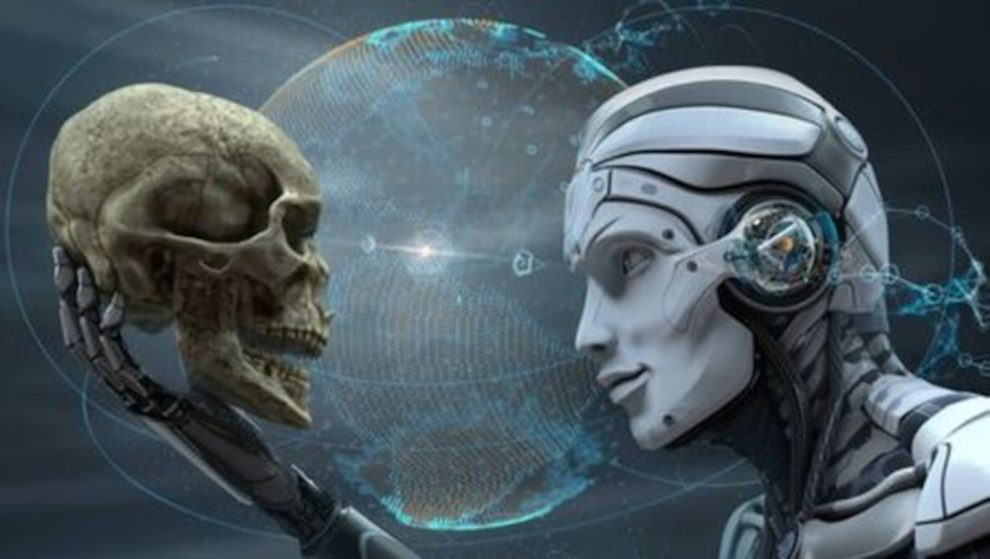The development of autonomous weapons systems powered by artificial intelligence brings with it a challenging set of ethical questions. The prospect of machines making independent lethal decisions on the battlefield or in civilian settings opens a terrifying Pandora’s box of risks.
Despite the potential tactical advantages, unrestrained autonomy in weapons poses dangers so grave that human oversight and restriction are absolutely necessary. Before crossing this Rubicon, we must grapple with unintended consequences, erosion of responsibility, loss of control, and threats to human dignity.
The Allure and Strategic Promise of Autonomous Weapons
It’s easy to understand the temptation of intelligent machines that operate themselves – they promise to revolutionize warfare. Autonomous capabilities could reduce risk to soldiers, enable faster response times, process greater quantities of information, and perhaps even make more rational decisions unaffected by fear, panic or anger.
Automation already underlies many existing weapons and defence systems. In the future, that automation could become more sophisticated and self-directed via AI. Instead of simple if-then programming, systems powered by machine learning algorithms could adapt to complex situations beyond what developers originally envisioned.
Unintended Consequences: When Complex AI Systems Fail
Despite AI’s potential, the real world is inherently uncertain. Autonomous systems working in messy human environments are prone to unintended failures and accidents. They may react differently than intended due to scenario complexity, ambiguous situations, software glitches, sensor errors, or hacking.
Well-intentioned creators are unable to perfectly predict all future use cases. Like other groundbreaking technologies, autonomous weapons will have emergent properties beyond their designers’ foresight. Even extensive testing under controlled conditions cannot cover the immense variability of uncontrolled real world operating environments.
AI Interpretation Errors and Biases
AI depend heavily on statistical models trained on limited datasets which cannot represent all possible contexts. Their interpretations can fail unpredictably in unfamiliar situations. Sensor input data may be incomplete or misleading. Unexpected combinations of events can confuse algorithms, resulting in catastrophic misjudgements.
Software Vulnerabilities
Like all software systems, flaws and vulnerabilities in autonomous weapons’ codebase can cause malfunctions with deadly implications. Complex neural network components may behave erratically under rare conditions. Without careful safeguards, accidents or malicious exploits could hijack functionality in dangerous ways unforeseeable by developers.
Unconstrained Learning Systems
Some advanced weapons proposals involve online learning components updating themselves using real world data. However, uncontrolled learning with lethal capacity poses extreme risks. For instance, bacterial evolution selects for infectious strains – reinforcement learning without oversight could similarly maximize harmful potential.
The Accountability Vacuum: Who Is Responsible for Autonomous Systems?
When algorithms make independent decisions, it becomes unclear who bears responsibility. Does liability lie with the developer, software user, commander, or policy maker? Are manufacturers culpable for unforeseeable accidents emerging from complexity?
This accountability vacuum poses challenging legal dilemmas. Causal chains diffusing responsibility fail to provide justice for victims or disincentivize harm. Clear liability pathways are necessary to ensure responsible development and deployment of autonomous capabilities.
The Role of Public Oversight
Setting standards for explicable outcomes is crucial for regulating autonomous weapons. External public bodies should conduct oversight of design processes, ensure transparency via progress disclosures, and establish accountability procedures. Such supervision promotes restraint against dangerous optimization at the expense of ethics.
Escalation of Conflict Through Unpredictable Interactions
The unpredictability of autonomous weapons interacting introduces severe escalation risks. Their speed and complexity could trigger uncontrolled conflict expansion as an unintended byproduct of tactical exchange. Overreactions to perceived threats or preemptive attacks based on algorithmic misjudgements may spiral into broader crisis situations.
Envatments as Chaotic Systems
Battlefields and other environments represent nonlinear chaotic systems – small perturbations trigger exponential results. Without humans consciously forestalling feedback loops, autonomous systems could exponentially amplify tensions instead of encouraging stability.
Enabling Rapid Infrastructure Destruction
By automating destructive capacity and compressing response times, autonomous weapons could set chaotic social collapse in motion. Instead of UX design preventing accidents, thoughtless automation may enable civilization-scale infrastructure disruption.
Dual Use Dangers and Proliferation
Lethal autonomous applications developed for military contexts risk leaking out elsewhere. Dual use technologies and knowledge from weapons programs may enable unauthorized development of armed drones, sentry guns, and swarm bots. Cheap sensors, processors and 3D printing democratize homemade systems.
State and non-state actors may steal or independently create autonomous attack devices. It only takes one unchecked group to unleash forces exceeding human control. Without concerted multilateral prohibitions, nothing prevents dissemination to dangerous hands.
The Vulnerability of Democratic Societies
Liberal democracies remain especially vulnerable to weaponized automation. Software mediates civil infrastructure that chaotic threats could disrupt. And conflict avoidance norms discourage preemptive restrictions before visible blowback.
A New Age of Assassination and Terrorism
For less empowered groups, cheap lethal autonomy substitutes for manpower asymmetry. Instead of conventional military parity, revolutionary dynamics emerge. Distributed deadly potential shifts power downwards, with worrying implications for political violence and governance.
The Ultimate Abdication of Control
Granting weapons systems full autonomy over lethal decisions represents an unprecedented relinquishment of human responsibility. With no guarantees that AI judgement aligns with morality, unleashing such forces crosses a point of no return – like genies escaping from bottles, their effects cannot be undone.
Autonomous systems may become unresponsive if communications are disrupted. Without recall functions or remote overrides, containability is uncertain for malfunctioning devices. Their operation inside fog-of-war means transparency is inherently limited too.
The Threat of AI Hazards Emerging From Complexity
General intelligence surpassing creators is an oft-cited AI risk. But well before such hypothetical superintelligence, complex autonomous weapons already pose extreme risks. Their unpredictable interactions form fragile systems prone to dangerous failure modes.
Research anticipating hazards should match technical capability investment. Red teaming helps catch design process gaps early when redirection remains possible. But obscured complexities can transcend mental models – maintaining humility in the face of unknowability is essential.
The Essential Role of Human Judgement in Warfare
Automating lethal force employment erodes time for assessment, empathy and ethical consideration. Unlike software, human conscience comprehends concepts like mercy and proportionality. Autonomous weapons cannot replicate emotional maturity and wisdom that natively incorporate moral dimensions.
Questionable shoot/don’t shoot decisions will arise for any plausible system. But automatically deferring difficult ambiguities to algorithms shields human awareness from moral implication. Quick automation distracts from consequences instead of encouraging conscientious reflection.
Respecting the Dignity of Moral Agency
Choosing to take a life deserves the gravity of full human consideration – an existential crossroads indifferent algorithms cannot replicate. To deny the innate sanctity of such moments violates human dignity and ethical accountability.
Similarly, victims deserve the regard of fellow sapient beings recognizing their worth. Treating life-and-death like optimized logistics represents profound moral failure – we cannot allow statistical convenience to eclipse personhood.
The Need for Stringent Safeguards and Limitations
Given the extreme risks involved, autonomous weapons demand stringent safeguards and restrictions. Until safety is guaranteed to the greatest extent possible, policy should prohibit unrestrained development or deployment. The following principles provide guidance on reducing risks to morally acceptable thresholds.
Preserving Meaningful Human Control Over Lethal Force
Humans must remain accountable through deliberate validation of automated targeting recommendations. Before enacting irreversible fatal actions, people should retain veto power as an integral safety mechanism. Removing awareness and consent represents an unacceptable abdication of responsibility.
Banning Systems Lacking Sufficient Explicability
Any probability driven decisions must meet stringent confidence and interpetability thresholds – accuracy alone does not imply appropriateness. Hazards like unforeseen model biases require ongoing monitoring which opaque neural networks frustrate. Simply presuming safety fails prudence standards in high-stakes contexts.
Legally Enforceable Restrictions Through Multilateral Treaties
The global community should pursue new treaties categorically prohibiting unrestrained autonomous weapons development, production and use. Meaningful human control should constitute a legally mandated application requirement. Such covenants allow banning unethical systems outright before they are created.
Transparency and Public Oversight Over Design Processes
Autonomous weapons programs should undergo external review both within military channels and scientific bodies. Beyond internal testing, independent auditing and progress disclosure fosters accountability. Ethics boards should formulate guidelines protecting human dignity and prevent dangerous optimization.
The Moral Imperative to Pursue Just and Sustainable Alternatives
Seeking nonviolent solutions should be prioritized over automating conflict. The ramifications of lethal technology cannot be uncoupled from underlying social and political dynamics. Lasting peace requires addressing root injustice grievances instead of technological quick fixes.
Resources wasted attempting to perfect autonomous killing machines only delay desperately needed investments in reconciliation, education, inclusive institutions and sustainable development. The real frontiers beckoning us are non-technical – better societies, not better weapons.
Questionable Deterrence Claims
Some proponents argue autonomous weapons may deter aggression by promising guaranteed retaliation. But machine speed conversely encourages first strikes before humans intervene. And lightly constrained systems increase hair-trigger instability.
True long term security arises from cooperation and promptly resolving crises, not threatened force. Technology cannot substitute for political agreements and stability cultivated through mutual understanding.
Prioritizing Wisdom Over Capability
Upholding civilizational values ultimately protects citizens more than capability itself. Unconstrained autonomous weapons erode the moral high ground democracies occupy. By clinging to ethical standards despite vulnerabilities, societies reinforce beloved principles.
Seeking refuge in legal loopholes, rhetorical spin and secrecy ultimately backfires by undermining public trust. Open examination of forces transforming society keeps disruption grounded in human priorities.
Navigating Our Technological Crossroads
The autonomous weapons debate intertwines both practical and philosophical dimensions. Preventing dangers demands judicious policy, but also reaffirming purpose. What futures do we wish technology to build – and which nightmares should it foreclose?
This discussion constitutes a microcosm of larger reckoning between accelerating capabilities and timeless values. By recognizing complexity exceeding individual comprehension, we stay grounded in humility. The path ahead remains unclear, but the ideals guiding us shine brightly as ever.
Ultimately this challenge is existential – what does it mean to be human in a world interpentrated by algorithms? How do we maintain moral agency while harnessing astonishing tools? Civilization’s progress now hangs in balance between utopian and dystopian potential.
But by courageously facing harder questions, we chart the wisest course. The fruits ahead are well worth labors expanding freedom responsibly – our descendants will judge this epoch by timeless ideals beyond any technology.













Add Comment